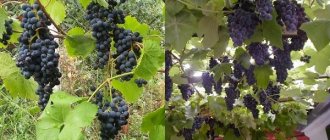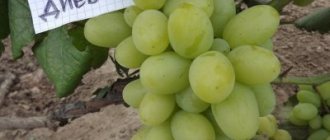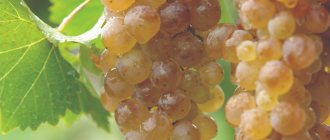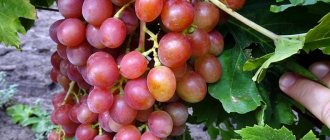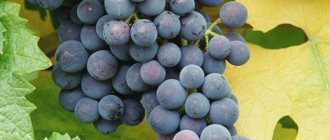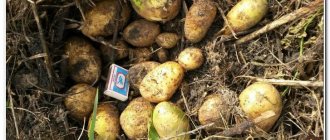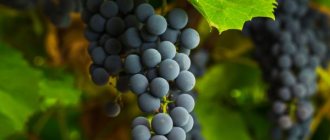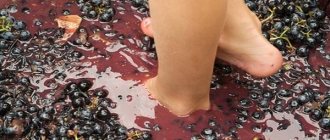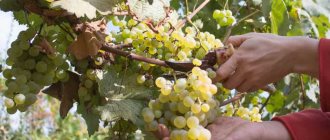Description of the potato variety Lapot
Lapot potatoes are classified as mid-early. From the moment of germination to harvest, an average of 65-80 days pass. The variety is resistant to weather changes and quickly adapts to new growing conditions and unusual climate. Recommended for cultivation in any regions of Russia and countries with similar climatic conditions.
Photo of Lapot potatoes
The bushes are low, up to 0.5 m, with erect pagons. There are a lot of leaves on each bush. They are rich green in color and have a typical shape. The flowers are white, collected in inflorescences. Approximately 5-8 full-sized potatoes are formed under each bush.
Interesting!
Initially, Lapot potatoes were grown in regions with difficult climatic conditions and poor soil. It does not require serious care, grows quickly, and produces a stable harvest.
The tubers are large, with an average weight of 100-160 g, but there are also record holders up to 600 g. The shape is elongated, slightly flattened on both sides - reminiscent of a bast shoe, hence the name. The skin is dull pink and the flesh is yellow. The eyes are shallow, there are not very many of them.
Characteristics of the variety
Also check out these articles
- Pachistachis flower
- Summer varieties of apple trees
- The best varieties of blackcurrant
- Potato variety Gulliver
The Lapot potato variety was bred by folk breeders in Russia in the 20th century. Since then, it has become widespread among gardeners who grow crops for personal consumption. What are the characteristics of this folk variety?
Photo of Lapot potatoes
- There is resistance to weather changes.
- Immunity is weak. The variety is affected by Alternaria blight, late blight of tops and tubers, as well as some other diseases. Of the pests, the wireworm creates the most problems.
- Product quality leaves much to be desired. The Lapot potato variety can be safely classified as a rough, common variety. And although its taste is excellent, the tubers are very large, with an uneven shape, and therefore do not attract the desired attention.
- There is resistance to drought and frost.
Important!
To prevent pests from attacking potatoes in the ground, they should be kept in a bright place for up to 12 days before planting. Thus, the potatoes will begin to turn green, toxic substances will appear in them, they will become bitter and inedible not only for people, but also for pests!
- It is not afraid of mechanical damage, so it is very popular on sale. Potatoes of the Lapot variety are very easy to transport over long and short distances.
- Easy to care for.
- The taste of the tubers is not bad. Contains 13% starch.
- The yield per hectare reaches 500 centners.
- The harvest after harvest is stored without significant problems. Safety reaches 94%.
Features of cultivation
What should you know to grow bast potatoes on your plot? Description of the variety, reviews from gardeners and recommendations from experts confirm that this species does not tolerate prolonged drought. All potato varieties need to be watered at certain moments, for example, when buds appear or tubers gain mass. At a minimum, the “bast shoe” will need to be watered three times - at the end of June, mid-July and early August. If possible, during hot periods, seedlings should be moistened every 3-4 days. In cool, rainy weather, watering once every 10-12 days will be sufficient. Approximately 2.5-3 liters of water should be allocated per bush. The best method of watering is sprinkling, especially for large potato plantings. Since it can already get cold at night in August, it is better to water in the morning. Then the leaves will have time to dry within a day. High humidity and low temperatures can contribute to the development of pathogenic late blight, and “bast foot” is very susceptible to it.
How to plant Lapot potatoes?
Lapot potatoes produce the largest harvest on light, fertile soil. But in principle it is unpretentious to the type of soil. Choose a sunny place for planting so that the earth warms up well. Darkening is not recommended, because the crop grows poorly in the shade. Of course, the groundwater level must be low, otherwise the root crops may begin to rot.
Photo of planting potatoes
Planting material must be germinated and sorted before use. It is advisable to take not very large potatoes - this is uneconomical. At the same time, small ones will not give a good harvest. The ideal option is medium-sized, healthy potatoes. It is worth recalling that potato seed material must be renewed at least once every 3 years to maintain high yields.
Interesting!
When planting potatoes, you can put a little onion peel in each hole. It will repel diseases and prevent pests, and then become an excellent source of nutrients for the crop.
The planting time depends on the region; it is desirable that by the time the procedure is carried out the ground has warmed up to 8 degrees Celsius at a depth of 8-10 cm. Potatoes are planted with a distance of 40 cm between tubers. Between the rows you need to leave up to 70 cm of free space. The planting depth of tubers is 7-8 cm no more.
Top dressing
Mulching rows is used to retain moisture in the soil and save time when weeding rows. It is best to use freshly cut grass or peat chips for this purpose. Sawdust can lead to severe oxidation of the soil. In addition, mice often live in them.
How to fertilize bast potatoes? The characteristics of this variety confirm that it is quite unpretentious to environmental conditions. But still, for the harmonious development of plants and high yields, special fertilizing is required. When the first shoots appear, the crops should be fertilized with nitrogen fertilizers.
During the ripening period, tubers need potassium and phosphorus. During this period of time, plants require feeding in the form of superphosphate or phosphate. For 10 liters of water you should take 35-40 grams of the substance in the first case and 20-25 grams in the second. You can also add a couple of grams of potassium permanganate, zinc sulfate and copper sulfate to the fertilizer.
READ MORE: 3 main diseases of sweet pepper seedlings, their treatment and photos
How to properly care for potatoes?
We recommend reading our other articles
- What to feed lambs
- Agrofibre for plant protection
- Chicken manure as fertilizer
- How to spray tomatoes against late blight
People value the Lapot potato variety very highly for its ease of care.
Photos of potato care
- Weeding, loosening the soil, and collecting weeds are necessary and important rules of care. They are done as needed.
- Watering is carried out abundantly, infrequently, so that the water does not stagnate. Pour water into the rows, not under the bushes! 2-3 weeks before harvesting, watering is completely stopped.
- The first hilling is necessary when the sprouts hatch. They need to be completely hilled up so that not even a leaf remains above the ground! The second hilling occurs when the sprouts have grown by 20 cm. Sometimes a third hilling is done - before flowering.
- It is recommended to remove flower stalks if possible. However, caution is important here so as not to spoil the harvest! This procedure is carried out exclusively with gloves and from time to time you need to wet your hand in a solution of potassium permanganate so that when the peduncle is torn off, you can simultaneously disinfect the place where it was torn off.
- Fertilizing is carried out with organic or mineral fertilizers. You can do without this procedure, but only if Lapot potatoes grow in loose, fertile soil. To improve the taste, solutions of potassium or wood ash are added under the bushes about 2-3 times per season.
Photo of watering potatoes
Important!
If you don’t have time to care for potatoes, weed them, remove weeds or water them frequently, you can mulch the beds and row spaces with straw. It is laid out in a layer of 35-50 cm. Among other things, such mulch will protect potatoes from night frosts if it is spread in the spring, immediately after planting.
- Pest and disease control can be preventive (folk remedies) or targeted (chemical, biological drugs) when the disease or pest has already appeared. The Colorado potato beetle is usually collected by hand, because few drugs effectively help against it.
